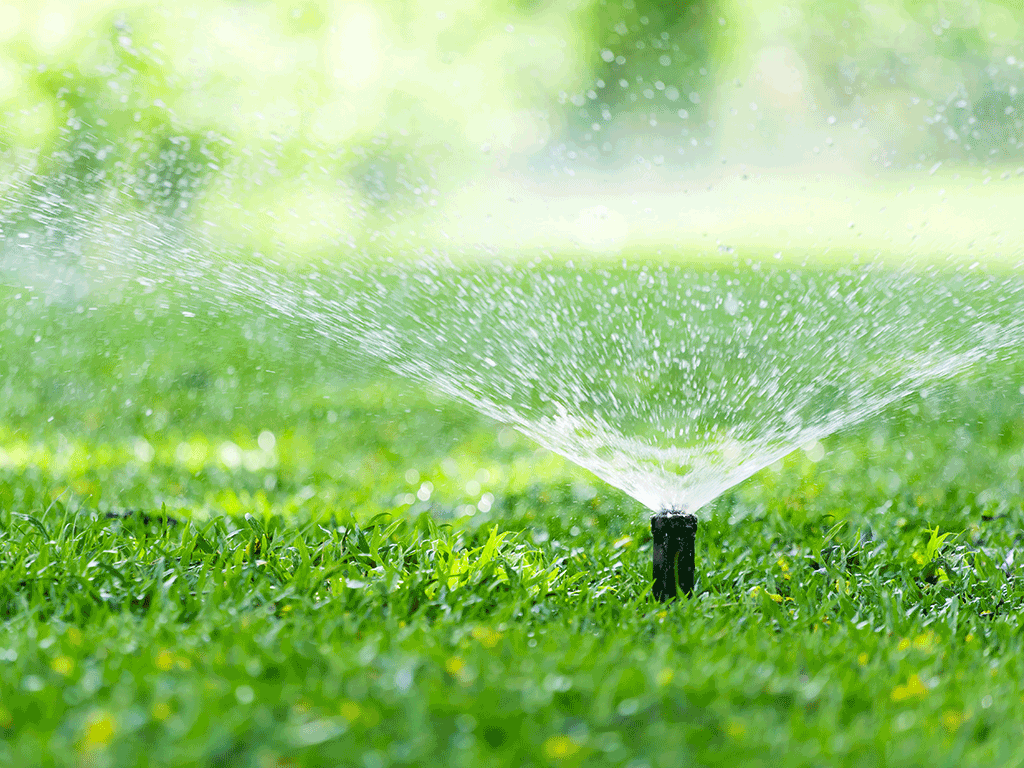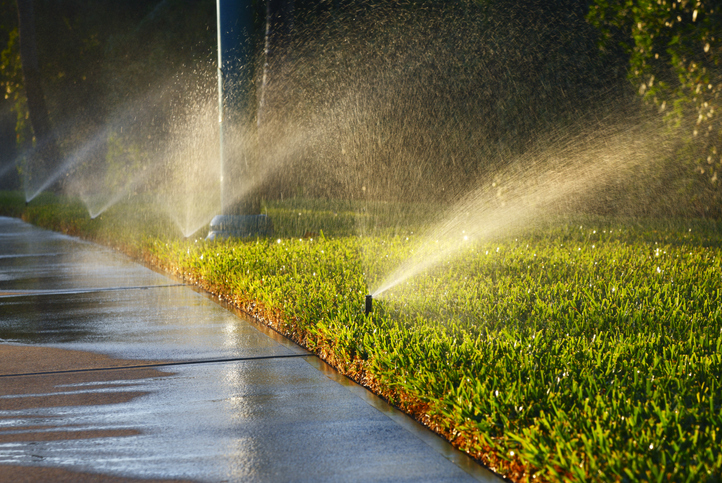Discovering one of the most Usual Problems in Lawn Sprinkler Equipments and Their Fixes
Automatic sprinkler are important for keeping healthy landscapes, yet they commonly experience numerous problems. Typical concerns include clogged up nozzles, damaged pipelines, and irregular watering patterns. Each of these can significantly influence system efficiency and water efficiency. Comprehending these troubles and their options is crucial for any homeowner. The following sections will certainly outline normal obstacles and the required repair services to keep an automatic sprinkler operating at its ideal. What follows might shock those not really prepared for maintenance realities.
Clogged Nozzles and Lawn Sprinkler Heads
Clogged up nozzles and lawn sprinkler heads prevail issues that can significantly impede the performance of a lawn sprinkler. Gradually, particles such as mineral, algae, and dirt buildup can accumulate, obstructing water flow and resulting in unequal protection in the grass or yard. This can lead to specific areas getting inadequate water, while others may become over-saturated.
Normal upkeep is crucial to stop these blockages. Routine checks can determine any type of obstructions, and cleaning can often be completed with basic devices like a tiny brush or a toothpick. Sometimes, soaking clogged elements in vinegar can assist liquify mineral deposits.
For serious clogs, replacement of the nozzle or head might be needed to restore correct feature. Attending to these issues promptly assures that the lawn sprinkler operates successfully, preserving a healthy landscape and enhancing water use.
Broken Water Lines and Leaks
Broken pipelines and leaks can substantially interrupt the capability of an automatic sprinkler. Identifying pipe damages early is important to stop further difficulties, and comprehending fixing methods can simplify the process. Additionally, applying preventative maintenance ideas can aid ensure the long life of the system and reduce the probability of future concerns.
Determining Pipeline Damage
Exactly how can home owners efficiently determine pipeline damage in their lawn sprinkler? To start, they need to on a regular basis inspect their yards for unusual damp places or pooling water, which may suggest a leakage. Additionally, property owners can check their water costs for inexplicable increases, suggesting concealed leakages within the system. Observing the lawn sprinkler heads for irregular spray patterns or insufficient protection can likewise signify possible pipeline issues. Furthermore, listening for uncommon sounds, such as hissing or gurgling, may indicate air getting away from harmed pipelines. Ultimately, performing aesthetic inspections of exposed pipes for cracks or corrosion can help pinpoint problems. By utilizing these techniques, property owners can proactively deal with and discover pipe damage in their lawn sprinkler prior to it leads to more substantial concerns.
Repair Service Techniques Introduction
Dealing with pipe damage in an automatic sprinkler calls for an organized technique to repair work, particularly when managing breaks and leaks. The initial step typically includes finding the damaged location, which can be achieved with aesthetic examination or stress testing. As soon as determined, the repair work strategy might vary; for little leaks, making use of pipe sealer or epoxy can successfully seal the afflicted section. In situations of significant breaks, reducing out the damaged pipeline segment and changing it with new piping, protected with suitable adapters, is recommended. In addition, making sure correct positioning and safeguarding joints will aid avoid future concerns. After repair work, detailed testing of the system is important to confirm that leakages have actually been fixed which the system operates efficiently.
Preventative Upkeep Tips
To minimize the danger of busted pipes and leaks in a lawn sprinkler, normal preventative maintenance is necessary. Homeowners must consistently inspect the system for visible damages, making certain that installations and pipelines are undamaged. Seasonal adjustments are essential; prior to winter months, systems ought to be drained to stop cold, while springtime checks can identify wear from frost or shifting soil. Furthermore, maintaining the location around lawn sprinkler heads clear of debris helps prevent clogs that could lead to leakages. Regularly testing water pressure can expose underlying problems, as extreme pressure may strain pipes. Lastly, recording upkeep tasks can assist track efficiency and recognize reoccuring problems, making it much easier to attend to any kind of concerns proactively.
Uneven Watering Patterns
Irregular watering patterns can bring about worried plants and irregular yards, coming from different causes such as blocked nozzles or misaligned sprinkler heads. Recognizing these concerns is crucial for reliable repair service and making sure consistent water distribution throughout the landscape. Solutions might include easy maintenance jobs or modifications to the sprinkler system for perfect performance.
Root Causes Of Unequal Watering
When an automatic sprinkler falls short to distribute water evenly throughout a yard, several variables might contribute to this issue. One typical reason is incorrect lawn sprinkler head placement, which can lead to overlapping or inadequate coverage. In addition, blocked nozzles can limit water flow, causing dry spots. Variations in water stress can also influence distribution, as some locations may get more water than others. Unequal surface or soil compaction can impact just how water permeates the ground, leading to uneven absorption. Lastly, the age of the lawn sprinkler components may cause reduced efficiency, contributing to irregular watering patterns. Identifying these causes is crucial for maintaining an efficient lawn sprinkler system and ensuring a healthy yard.
Solutions for Fixing Issues
Addressing unequal watering patterns needs an organized approach to identify and remedy underlying concerns. Checking lawn sprinkler heads for blockages or damages is essential; cleansing or changing them can improve water distribution. Next, adjusting the automatic sprinkler's pressure settings may assist attain an extra consistent spray. In addition, reviewing the format of the lawn sprinklers can disclose locations that require rearranging to assure insurance coverage uniformity. Looking for leakages in pipes or fittings is crucial, as leakages can bring about irregular watering. Configuring the timer to fit different zones based on plant needs can enhance overall efficiency. By executing these services, one can efficiently restore well balanced watering patterns within the landscape.
Timer and Control Concerns
Although a well-functioning timer is critical for peak lawn sprinkler system efficiency, numerous homeowners encounter concerns that interrupt their watering routines - sprinkler system repair. Common issues include damaged programs, where timers might not show the designated watering times, causing over- or under-watering. Additionally, power outages can reset timers, creating them to return to default setups and ignoring the personalized schedules home owners depend upon. Breakdowns can also come from outdated innovation; older timers might lack the functions required for maximum control, such as rainfall sensors or wise modern technology combination. Electrical wiring concerns can prevent signals from reaching the shutoffs, providing the system inoperable. Routine upkeep and prompt updates can aid alleviate these problems. Home owners should think about consulting professionals for fixing to ensure their timers run properly and here efficiently, as proper control is vital for conserving and preserving a healthy landscape water resources
Lawn Sprinkler Pressure Issues
Exactly how can inadequate water stress influence an automatic sprinkler's performance? Not enough water stress can bring about irregular water circulation, causing completely dry spots and overwatered areas. This incongruity endangers the total wellness of the landscape, as plants might experience either dry spell anxiety or root rot. Low pressure can additionally hinder the procedure of lawn sprinkler heads, avoiding them from reaching their designated variety and coverage.
 Alternatively, extreme stress can trigger damages to the system, resulting in leakages or broken elements. Ruptured pipes and malfunctioning lawn sprinkler heads might occur, sustaining pricey repair work. Recognizing the origin of stress issues is necessary; common offenders consist of clogged filters, malfunctioning valves, and even metropolitan supply problems. Routine system checks can aid maintain proper stress, making certain a efficient and reliable lawn sprinkler. Proper pressure administration is critical for peak performance and longevity of the irrigation system.
Alternatively, extreme stress can trigger damages to the system, resulting in leakages or broken elements. Ruptured pipes and malfunctioning lawn sprinkler heads might occur, sustaining pricey repair work. Recognizing the origin of stress issues is necessary; common offenders consist of clogged filters, malfunctioning valves, and even metropolitan supply problems. Routine system checks can aid maintain proper stress, making certain a efficient and reliable lawn sprinkler. Proper pressure administration is critical for peak performance and longevity of the irrigation system.Seasonal Upkeep Tips
As the periods adjustment, implementing regular maintenance for a lawn sprinkler ends up being important to ensure peak efficiency and long life. Home owners ought to begin by checking the system before the beginning of each season. In the spring, examine for any winter season damage, clean the nozzles, and adjust the spray patterns to accommodate new growth. During the summer, verify that all zones are running successfully, monitoring for any dry places or overwatering. In the loss, it is necessary to prepare the system for winter by draining pipes the lines, blowing out the pipes, and shielding any kind of exposed elements. Finally, a detailed assessment in the wintertime can assist identify potential concerns that may occur in the spring. Regular upkeep not only prolongs the life of the lawn sprinkler system however additionally advertises a healthy landscape, lowering water waste and making sure an efficient irrigation procedure throughout the year.

Troubleshooting Common Sprinkler Issues
What actions should home owners take when confronted with common sprinkler issues? First, they need to observe the system for visible signs of malfunction, such as wet areas or damaged heads, suggesting leakages. Next, checking the timer settings and verifying the system is programmed correctly is essential, as improperly set timers can result in overwatering or underwatering. Property owners ought to likewise examine the valves for blockages and confirm they close and open effectively.
If the system reveals low tide pressure, it may be due to a clogged filter or a malfunctioning pump, demanding detailed cleansing. Furthermore, property owners must confirm that the watering areas are working individually and not overlapping, which can drainage. If problems persist, speaking with a professional might be needed to identify and deal with even more complicated problems, validating the lawn sprinkler system operates successfully and properly.
Often Asked Questions
Just how Typically Should I Examine My Automatic Sprinkler?
A lawn sprinkler should be evaluated at least two times a year, preferably in spring and autumn. Regular checks aid determine leakages, blockages, and various other problems, ensuring optimal performance and water performance throughout the seasons.
Can I Mount an Automatic Sprinkler Myself?
Yes, a person can install a lawn sprinkler system themselves, offered they have the essential tools, expertise, and skills. Nevertheless, it is advisable to get in touch with regional laws and guidelines to ensure proper setup and conformity.
What Is the Typical Life-span of an Automatic Sprinkler?
The typical life-span of a sprinkler system usually varies from 10 to two decades, depending on the high quality of products, upkeep practices, and environmental problems, which can significantly affect its long life and overall performance. irrigation system installation.
Are There Eco-Friendly Options for Sprinkler Solutions?
Eco-friendly options for lawn sprinkler consist of drip watering, rainfall sensing units, and clever controllers. These technologies save water, minimize drainage, and advertise efficient watering, making them sustainable options for eco conscious homeowners seeking effective irrigation solutions.
How Do Climate Condition Influence Lawn Sprinkler Efficiency?
Climate problems significantly influence sprinkler performance; for example, too much heat can bring about dissipation, while hefty rains may trigger oversaturation. Furthermore, wind can interrupt water distribution, causing ineffective watering and unequal protection across landscapes.
Stopped up nozzles and sprinkler heads are common concerns that can substantially prevent the efficiency of a sprinkler system. When a sprinkler system falls short to disperse water uniformly across a lawn, numerous aspects might contribute to this concern. A well-functioning timer is critical for peak lawn sprinkler system performance, many homeowners run into problems that disrupt their watering routines. How can poor water stress impact a lawn sprinkler system's efficiency? Regular system checks can aid preserve proper stress, guaranteeing a efficient and efficient lawn sprinkler system.